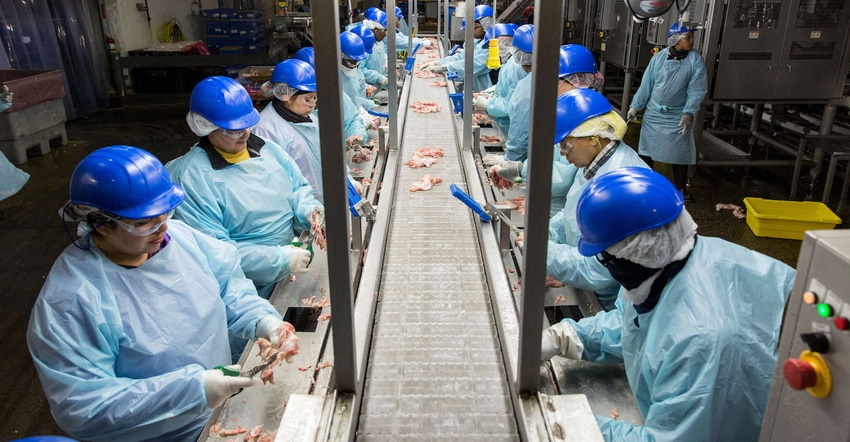How Food Manufacturers Will Tackle the Labor Crisis in 2022
Powder & Bulk Solids explores how some of the food and beverage industry’s biggest players are addressing workforce issues.

America’s food and beverage companies are in the midst of a major labor crisis as the COVID-19 pandemic continues to wreak havoc on the country’s supply chain. Over 130,000 jobs in the US consumer packaged goods industry – which includes food and beverage products – were unfilled as of October 2021, according to a recent Consumer Brands Association analysis of US Bureau of Labor Statistics (BLS) employment data. The industry organization’s chief executive officer, Geoff Freeman, said this month that vaccine requirements set to take effect in some American workplaces at the start of 2022 could hinder the food and beverage industry’s efforts to attract talent.
“We are experiencing a supply chain crisis unlike anything our industry has seen before and the labor shortage is at the top of our list of concerns,” said Freeman in a statement. “While fully supportive of increasing vaccination rates, we are holding our breath that the new vaccine requirements don’t further erode the essential workforce and ask the Biden administration to partner with industry to track progress as we approach the January 4 deadline.”
While vaccination mandates may be playing some role in the shortage, a variety of other long-standing factors are at play that the industry has struggled with for decades, including low wage growth for production staff, immigration issues, and a short supply of skilled workers. Nonetheless, the labor disruptions created by COVID-19 are unprecedented and some observers see these problems continuing into the coming year.
“The labor challenges that we’re seeing are certainly tougher than I remember,” Campbell Soup Co. chief executive officer and director Mark A. Clouse said in September. The company’s Q4 2021 earnings call noted that that the availability of workers is expected to “remain highly volatile” during its fiscal year 2022.
Attracting new workers and strengthening relationships with existing employees was top of mind for Conagra Brands president and chief executive officer Sean Connolly in a discussion with investors last month. “It’s a tight labor market, and it takes a lot of ingenuity and creativity and effort to attract and retain employees to the best of our ability,” the executive stated. “So, we’re obviously always trying to cultivate the strongest possible relationships with our employees so that they feel good about coming to work every day.”
Chocolate maker Hershey Co. intensified its recruitment efforts during 2021 as well as its efforts to identify and respond to the needs of its existing workforce. “We know that we have highly competitive wage rate. We have excellent benefits and we routinely benchmark all of that, “Melissa A. Poole, vice president of investor relations for Hershey, said in the firm’s Q3 earnings call, “but we’re also very focused on the softer factors that are very important to our employees and that includes, especially in these times of global supply chain challenge, work life balance, stress management, flexibility in hours, being able to get time off.”
Strategies to combat the labor predicament vary from company to company – increasing pay, adding benefits, hiring bonuses, among others – but it is likely that food manufacturers’ HR teams will stay busy in 2022 as the labor crunch wears on across the consumer packaged goods industry.
“Like our peers, we continue to face a challenging labor environment, leading to higher overtime costs and elevated hiring and training expenses,” Amit Sharma, vice president, investor relations for Hostess Brands, said in a call with shareholders in early November. “Our team has performed exceedingly well through the current labor environment, and we are taking additional steps to mitigate these challenges by investing in our workforce and employment, which we expect will have a positive impact on our cost structure and production capacity over the long term.”
Hostess’ comments on the labor situation suggest that these woes may be here to stay and that it views investments in its workers as a strategy for long-range success. Other food manufacturers will probably continue to tweak their compensation and benefits packages and other benefits next year.
These issues and other operational challenges, like labor strikes, that materialized during the pandemic have led some major food and beverage companies to turn to contract manufacturers to increase or maintain their capacity in 2021.
Mondelez International experienced strikes at three of its manufacturing plants and three distribution centers in the US this year, reducing production during the third quarter, according to the candy manufacturer’s Q3 results. Dirk Van De Put, the firm’s chairman and chief executive officer, said in a November 2 shareholders callthat the company has entered into contracts that “give us flexibility and unlock additional capacity to support our growth ambition.” Additionally, Mondelez said it is eying opportunities to reduce the number of SKUs in its portfolio to increase its level of service and efficiency.
As the labor crisis continues, it is possible that more food and beverage firms will consider forming co-manufacturing relationships.
To learn more about the major issues that will impact US food and beverage manufacturing in 2022, click here.
About the Author(s)
You May Also Like





